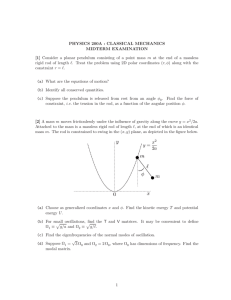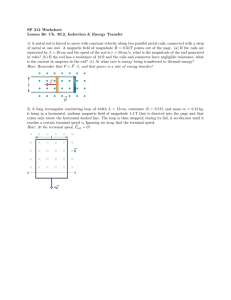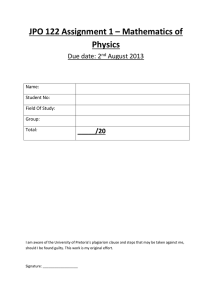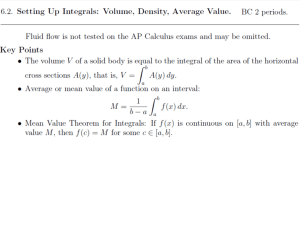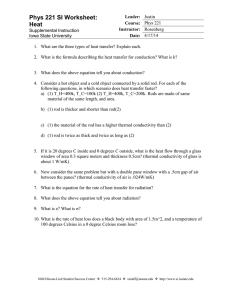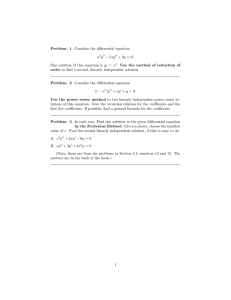Physics 2426 Homework Solutions - Giancoli, Chapter 21 43. (a
advertisement
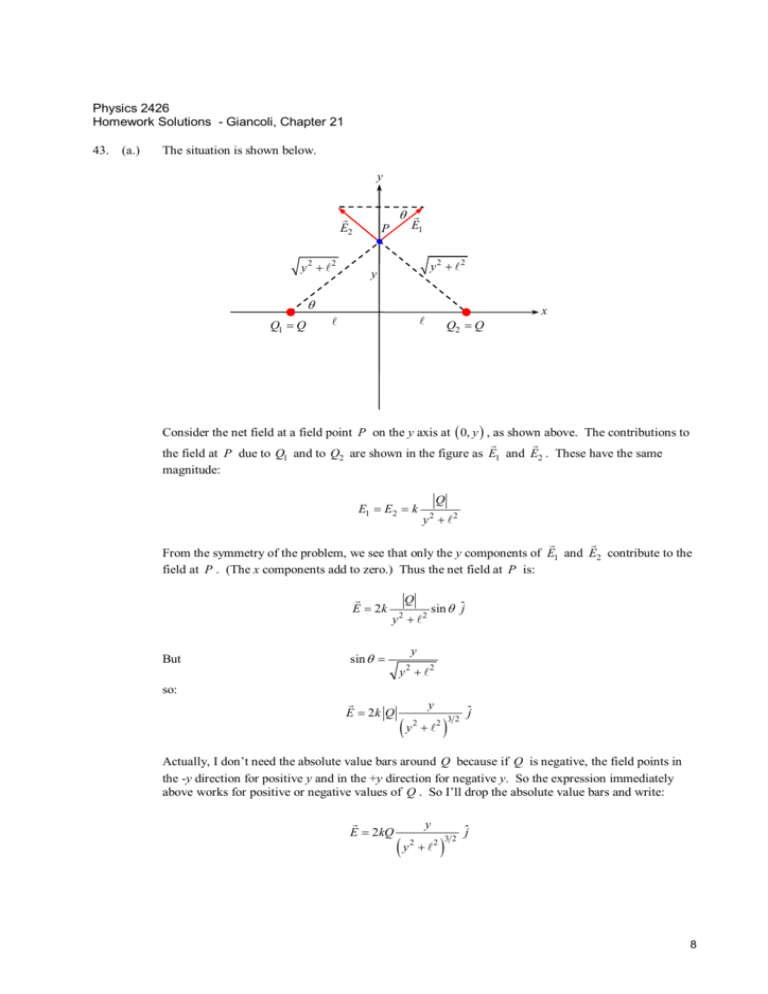
Physics 2426 Homework Solutions - Giancoli, Chapter 21 43. (a.) The situation is shown below. y θ E2 y2 + E1 P y2 + 2 y 2 θ x Q1 = Q Q2 = Q Consider the net field at a field point P on the y axis at ( 0, y ) , as shown above. The contributions to the field at P due to Q1 and to Q2 are shown in the figure as E1 and E2 . These have the same magnitude: Q E1 = E2 = k y + 2 2 From the symmetry of the problem, we see that only the y components of E1 and E2 contribute to the field at P . (The x components add to zero.) Thus the net field at P is: E = 2k But Q y + sin θ = 2 sin θ ˆj 2 y y2 + 2 so: E = 2k Q y ( y + 2 2 ) 32 ˆj Actually, I don’t need the absolute value bars around Q because if Q is negative, the field points in the -y direction for positive y and in the +y direction for negative y. So the expression immediately above works for positive or negative values of Q . So I’ll drop the absolute value bars and write: E = 2kQ y (y 2 + 2 ) 32 ˆj 8 Physics 2426 Homework Solutions - Giancoli, Chapter 21 (b.) To find the values of y for which E is a maximum, I take the derivative with respect to y and demand that it be equal to zero. Doing so, I get: (y 2 + 2 ) 32 ( − 3y2 y2 + 2 y2 = 2 ) 12 =0 2 y=± 2 48. The situation is shown below. y P x x x′ dx′ Consider an infinitesimally small element of the rod of length dx′ , as shown in the figure. (I’m calling it dx′ because I don’t want to get it confused with x … The variable x′ is the one I’m going to integrate over, while x stays fixed.) Let the position of this element be given by a coordinate x′ , as shown (again, not the same as x). Let the origin for the coordinate x′ be at the right end of the rod and the positive direction for x′ be to the right (same as for x). If we call the (uniform) charge per unit length along the rod λ , then the infinitesimal bit of the rod shown above has charge dQ given by: dQ = λ dx ′ . The infinitesimal contribution to the field at P due to this element has magnitude: dE = k dQ r 2 =k λ dx ′ ( x + x′ ) 2 = kλ dx ′ ( x − x ′ )2 , in which I’ve recognized that x ′ = − x ′ , since x′ is negative for all infinitesimal elements of the rod. To find the net field produced at P by the entire line charge of length , all that remains is to integrate up all the contributions dE given by the expression above as x′ goes from − to 0: 0 E = dE = k λ − dx′ ( x − x′)2 Notice that x is just a constant as far as this integral is concerned, as mentioned earlier. Carrying out the integration, I find: E = kλ 1 x − x′ 0 = kλ − 1 1 − x x+ = kλ x(x + ) 9



